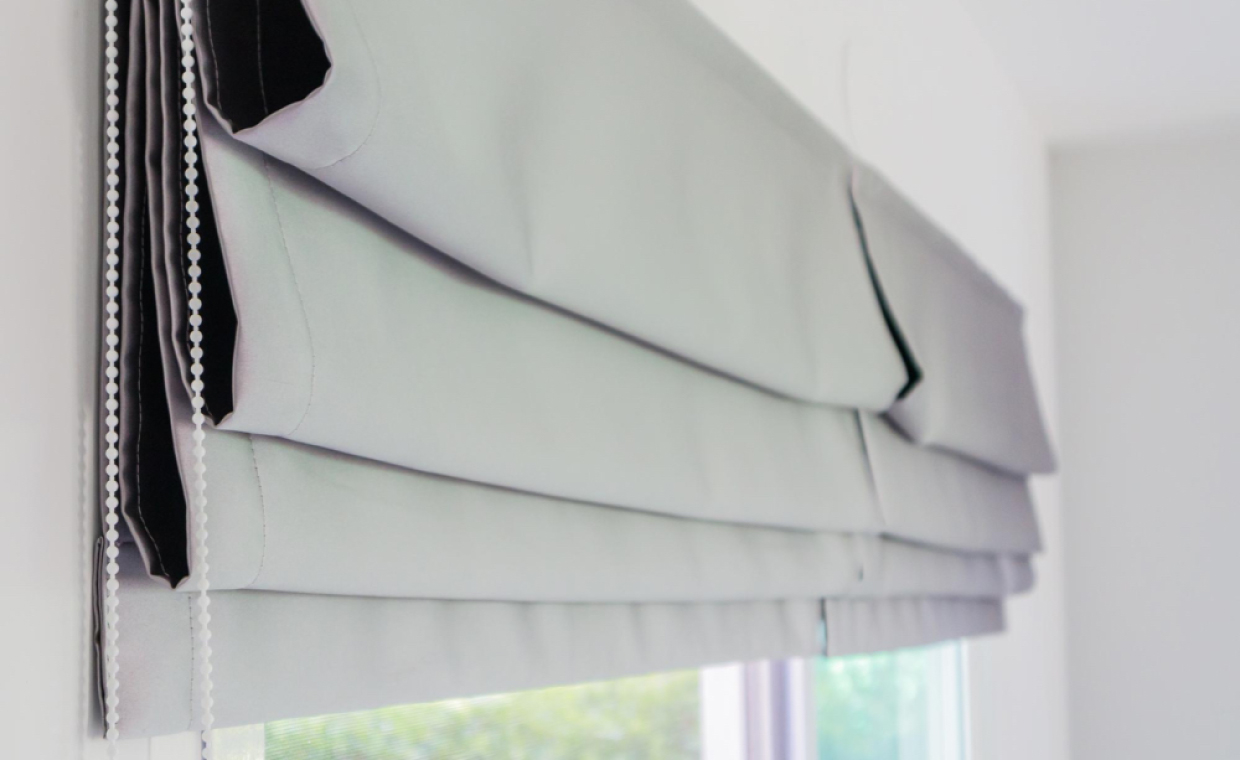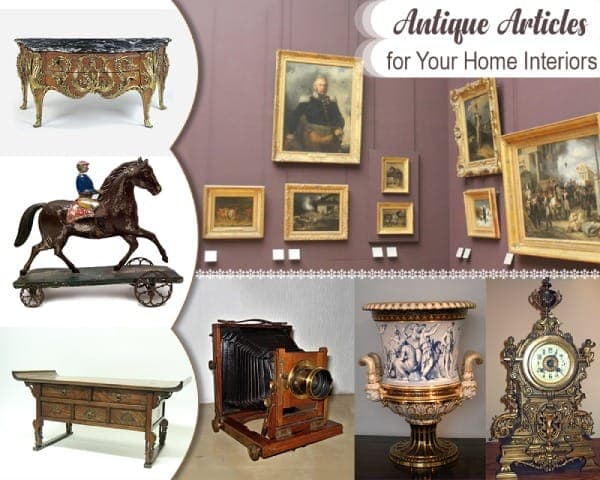
Old V/S Antique
“Old is gold” is not just a well-known adage. Many seem to have an intense fascination toward anything that is old, vintage, or an antique. But there is a steep difference between the old and an antique piece. If you take a look at the architectural wonders of the world, you will realize that these creations of timeless beauty have priceless memories attached to them, not to mention that they represent the ideals and philosophy of that time. They are truly antique.
As quoted by ‘CeeLo Green’, “antique things have an appreciation and worth. Many things are old, but few are timeless; for simple reason therefore, they become an antique. If this antique value is preserved, it could be passed down as a family heirloom.”

Technology and modern materials have replaced the old, handmade products of natural materials like wood, stone, ivory, and so on. This has resulted not only in the disappearance of such products but also the skills that those artisans used to possess. The artefacts, which were the result of a creative mind and two skilled and artistic human hands, have vanished and instead machine-made products have flooded the market. Even the digital technology has replaced many old styled machines, for example a Remington typewriter has been replaced by new-age laser printers.
So, what exactly an antique is? Is it just being old enough? No, not exactly! An antique is any item that is over a hundred years old at least. It is valued for its rarity, elegance and possible history linked to it. Such items are never used by the current generation. You might find the item to be as simple as a jewelry box but the fact that it was used by an influential person sometime in the distant past or if it is one of the few limited designs surviving from the days it was manufactured, which makes it a special collector’s item.

Antique as Collection & Dear:
So, antiques are normally preserved in museum. What are the types of antiques you can possibly collect? Broadly speaking, antiques can be anything like a piece of furniture, art, clock, jewelry, Hanging Bell, porcelain figurines, swords, kitchen items, silver pieces, metallic vessels and lamps, royal clothing, glassware, firearms, dolls, top toys, etc. As the special decorative items, they add elegance to the rooms they adorn. Owning a world-famous antique in itself has become a symbol of wealth and a subject of status in society which is why in movies we see billionaires having Picasso paintings or some other decorative item from ancient times adorning their rooms.
Antique pieces have a unique historic value that cannot be worth or be replicated by new items. They not only add character and charm to a home but also serve as a connection to the past. Antiques can tell a story of a particular period, culture, or even a specific person. They can also serve as a reminder of a specific era in history and can be used to educate future generations about the past.
Let us look at a few commonly owned antiques.
Antique Furniture


As Fred. W. Burgess says in his book (Published in Antique Furniture), there has always been a halo of romance about furnishing the home with the pieces of furniture belonging to a past age, and if these items are somehow associated with the family life, it’s a legacy. Half the pleasure in possessing the old furniture lies in memories it revives and the realism with which the ancestral homes can be visualized. When we try to trace the evolution of an antique furniture, it helps us to understand the old styles and the way its influence has impacted the design of household furniture of those times into the antiques of todays’ time.
Furniture are the most common type of antiques for home interiors. The finish of the wood and old designs add refinement to home decor. Ageing also provides a special sheen that speaks volumes about the bygone era. The delicate and fine craftsmanship represents the style of the contemporary period in which the furniture was made and the style added value to the piece.
Antique furniture can very well serve the purpose of daily household usage or can simply be used as a decorative item. They can be sofas, chairs, cots, chest of drawers or cabinets.

The Furniture History Society is an organization in the United Kingdom that studies and researches about different types of antique furniture. They study furniture of all periods, places and kinds to enhance knowledge and appreciate it and to assist in its assessment and preservation.
The antique furniture can be classified as one of the belongings to the Edwardian, Colonial, Victorian-era etc. Alternatively, they can be classified according to the region of origin such as Indian (Mughal, Peshwa, Gaekwad, etc.), Chinese, British, Danish, French, etc. Many households might have hand-me-down furniture that are older than a hundred years. They belong to the category of antiques too. You just have to know how valuable they are, historically, financially, and emotionally.
As written by Fred. W. Burgess in his book (Published in Antique Furniture), “In an earlier period of Egyptian history, the style of ornaments evolved from the materials at hand, and from the materials that were brought to that country by native travelers and merchants.”

The description and details of furniture styles according to their era in itself is quite extensive. So, we will just check the important points that would help you in managing the antique furniture that you own.
Care of Antique Furniture
01. Avoid excessive polishing, refinishing of course and unnecessary repair of antique furniture. Furniture with old markings and minor faults represent the time and history associated with them and their time which make them even more priceless.
02. Protect the furniture from moisture and direct sunlight. Wooden furniture is more prone to deterioration when exposed to moisture. The sunlight also causes fading of the color.
03. Old furniture are mostly crafted from sturdy and expensive wood. Seasoned wood is durable but are the subject of proper care. It is always safer to employ professional help for revamping them, but you should mend only when it is enevitable.

04. Also, be careful while distinguishing between the older superior quality wood and the newer, recent cheaper versions like particle board, veneer over plywood etc. which can easily misguide an amateur collector.
05. Avoid cleaning with soaps and harsh detergents.
06. Waxing the wooden furniture surface with beeswax will emphasize its features and add a layer of protection. In case it has drawers, the wax polish will help in sliding the drawers in and out easily with minimal friction. However, beware of going overboard with wax application as it may cause unwanted dust accumulation and the polish may become scratchy.
07. Make sure that you regularly dust the furniture with a soft cloth. If extensive cleaning is required, use a soft damp cloth to wipe off grime and immediately dry the surface with absorbent paper or dry cloth.
08. Vacuum the upholstery regularly.
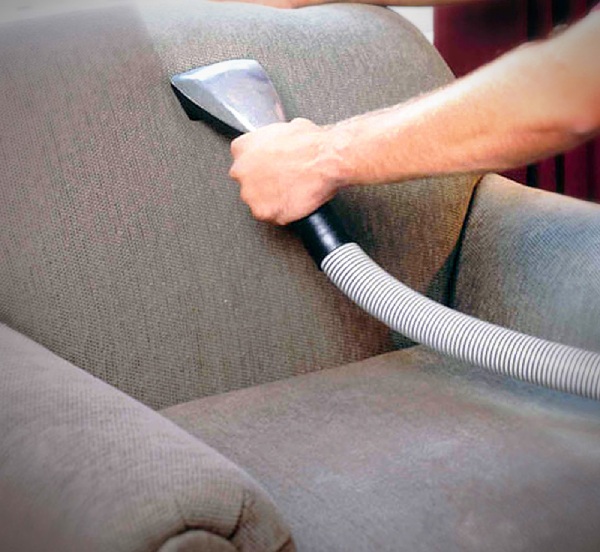
09. Clean spillages immediately and allow the furniture to dry completely before applying any wax polish.
10. Take care while polishing any metallic embellishments. The cleaning solutions may damage the surrounding wood.
11. Exercise caution while handling, lifting, or moving an antique furniture. The parts might come loose with rough usage and handling.
Antique Clocks
As said by Fred. W. Burgess in his book (Published in Antique Furniture), the making of time has been a necessity since quite earlier dayspast. The divisions of the year, month and day, scarcely come within the purview of a domestic clocks, but those indications were only available in grandfather clocks. It also indicated the phases of the moon. The Jews and Romans introduced the system where the day was divided into 24 hours and they assigned equal numbers to day and night, without any regard to the varying lengths of the solar day in different seasons.

But when we look at the current scenario, with the introduction of mobile phones, even the need for clocks has decreased drastically, if not completely.
Clocks with their varying shapes and designs increase the aesthetic of a room. They are available in a plethora of designs to match the room interiors. Grandfather clocks, pendulum clocks, wall clocks with chimes, mantel clocks are few of the antique clock varieties you can collect as per availability. However, these are mostly show pieces: if you need them for tracking time, older mechanical clocks may not be quite accurate in timekeeping.
The mechanical clocks first used were initially popular in medieval Europe. The first and the oldest (1386) mechanical clock is still available at display in Salisbury cathedral in England. Since the clocks were being designed from the scratch i.e. springs and pendulum, they turned into a status symbol and were only owned by the elites of the society.
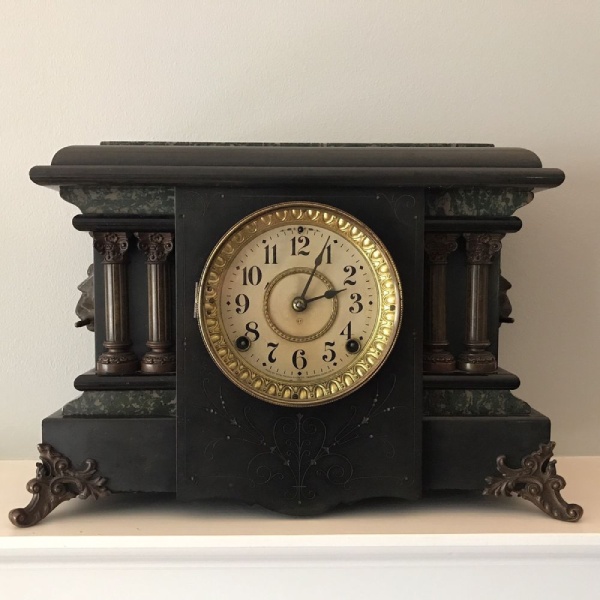
The period from 1660 to 1730s is considered the ‘golden age’ of clock making which is reflected in the prices of the clocks from this era. They are counted amongst the most expensive antique clocks. Those pieces are rare and difficult to find especially the Grandfather clocks.
Some of the famous antique clocks are Ansonia (1850-1929), Howard Miller (1926 – present), New Haven (mid-1800s), E. Ingraham, and Seth Thomas clocks etc. You can find a huge list of century-old clock companies grouped according to the counties on the internet. Listing them here is beyond the scope of this article.
Care of Antique Clocks
01. Lubricate its mechanical parts in every 5-6 years to keep them in good condition. Be absolutely sure how to do it. Half-baked knowledge may harm your antique piece.
02. Avoid exposure in direct sunlight. Also, keep them on a mantel or near the heater. The indiscriminate uses may cause damage due to unwanted humidity and temperature changes.
03. Position the clocks on firm bases or fix them tightly on the wall to avoid unnecessary movement or to minimize the risk of dropping on the floor. A single fall may destroy its delicate inner mechanism, and in today’s age of smart digital watches, searching a person who can do the intricate repairs is equivalent to look for a needle in the haystack.

04. Hold the clock in its entirety while handling or moving to prevent falling off of loose parts.
05. Care has to be taken while positioning and using clocks that employ heavy pendulums or weights. If it is not otherwise necessary, the experts advise to disengage them from the intricate mechanism and just display the clock as a decorative piece.
06. Cleaning can be done using a fine bristle brush and soft, tightly woven cloth. Loose fibers of the cloth may have a tendency to tangle with the fine teeth and edges of the inner clock mechanism. So be careful!
07. Don’t tinker with the polishing of the wood or brass clocks if they are quite old. The patina or the sheen on the clock surface is considered a feature of rare timeless beauty.
08. Exercise caution while using lubricating oils, metal polishes or cleaning solutions. It is wise to hire professional help to clean antique clocks.
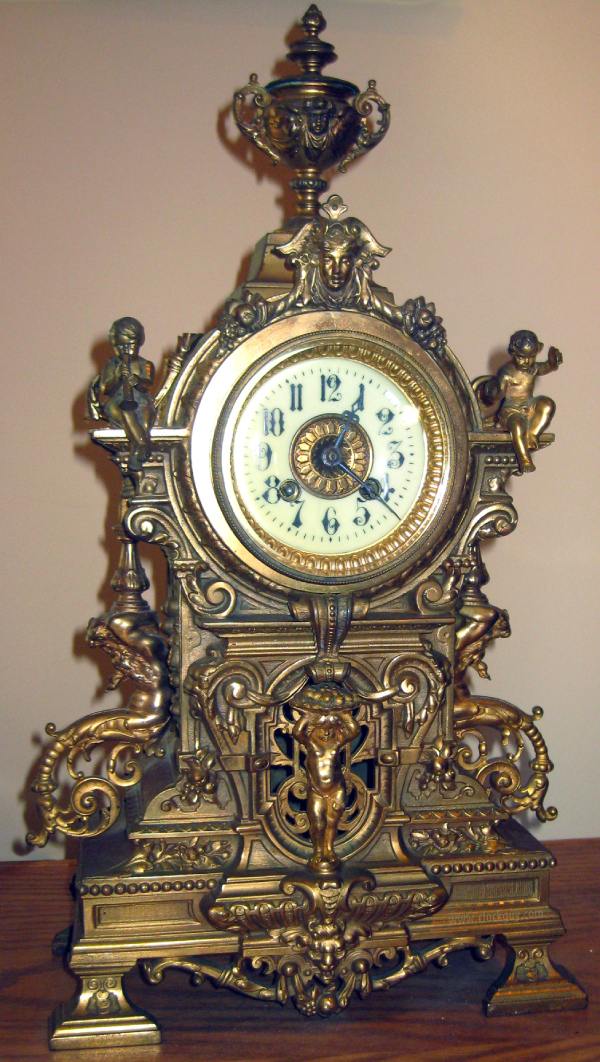
09. It is rightly said that a rolling stone gather no moss, so keep the antique clocks running. Idle clocks require extensive servicing and are prone to rust, mildew and more deterioration or in other words, a bigger hole in your pocket. But as said earlier, if not possible, just preserve them as showpiece and enjoy the beauty.
10. Learn the correct manipulation of an antique clock such as –
(a) The correct length of the pendulum – that determines the speed of the clock
(b) Frequency and timing of winding the clock is an important point. Some clocks run for 8 days and some for 30 hours. So, wind the clock spring accordingly and at regular intervals of time or be prepared to have inaccurate time measurements.
(c) Get familiarized with the direction of clock’s Sudden forceful winding in the wrong direction can damage the springs permanently making them useless.
(d) If the hands of the clock are jammed, release them with a slight back and forth motion. Never employ excessive force the turns. If they don’t move, avail professional help.
Art Antiques
Paintings are one of the most expensive art antique articles for home interiors since they’re special and specific to an artist along with an emblem of his era and time.
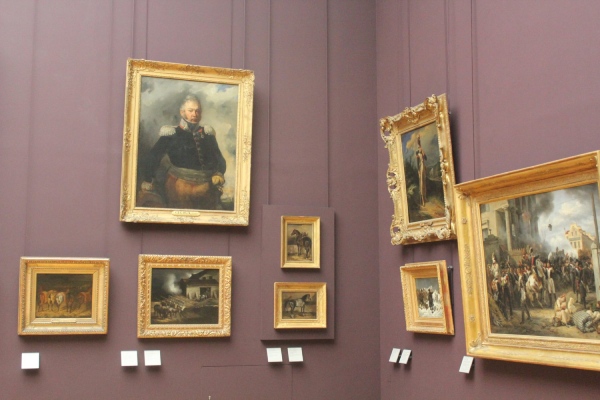

Exhibiting antique paintings on the wall of your home/gallery will definitely give an artistic look to the interiors. However, if the paintings can be preserved in a controlled environment where optimal humidity and temperature can be regulated, it would certainly increase the longevity of the painting and perhaps will help you to keep them in decent condition.
Years of dirt, changing seasons and human touch are the most common triggers to damage the paintings and turning them fragile. Proper preservation of these antique pieces requires nothing less than expert handling and proper care.
Care of Paintings
01. Simple dusting with soft dry bristle brush keeps the dust away from the painting surface. Avoid using a rough cloth and don’t try to scrub the surface of the painting. If the paint is chipping off, do not even brush or scrub it.
02. You may apply varnish. Most of the oil paintings are given a coat of varnish once the work is completed. Reapplication of varnish in every few years will help in protecting the painting. Paintings on paper need to be glazed or laminated.
03. Know the materials used in the painting and treat them accordingly since environmental conditions affect almost all the components used in making it.
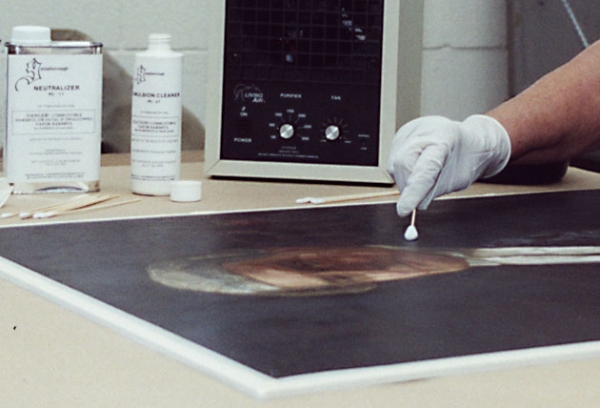
04. Use clean gloves to handle and clean an antique art.
05. If the painting is made on paper and mounted on a wooden board, check for brownish discoloration around the edges of the board. Such stains mostly result from deterioration of poor-quality wood and may require careful replacement.
06. If you wish to display the picture on the wall, hang it on adequate support. Reinforce this support with extra hooks and wires, especially where a painting is heavy in its weight.
07. Secure the hooks to the frame to prevent damage to the art.
08. It is advised to lean the painting away from the walls to allow air circulation around it.
09. Place it away from the heat sources, wet areas or direct sunlight.
10. While displaying a painting, never forget the following factors –
(a) The sturdiness of the frame
(b) The depth of the frame
(c) The safe space between the painting and the backing board
(d) The lining of the frame and the quality of the backing board
Always employ an art expert while preparing a painting for display or storage because preserving decades-old antique paintings is completely technique sensitive. Do not try a DIY project on antique paintings if you are not well trained for it, better be safe than sorry.
Porcelain Antiques
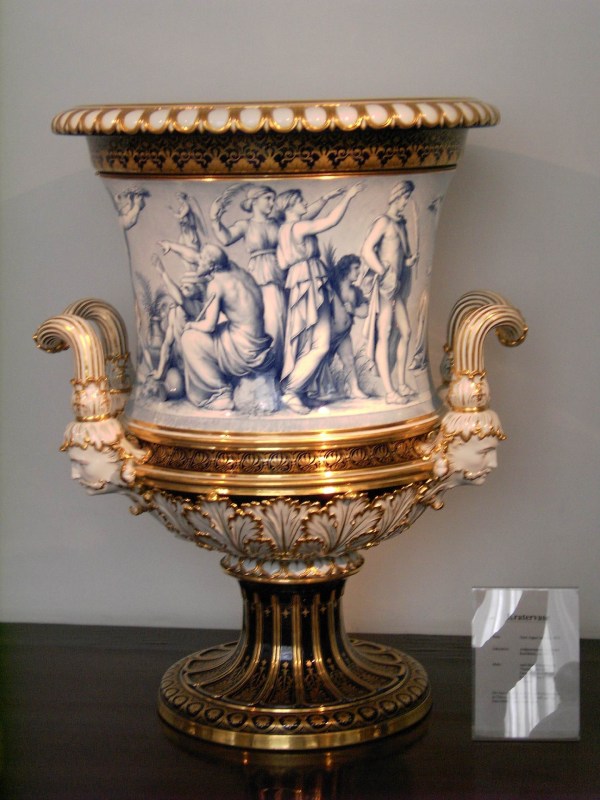
Though porcelain items are fragile, they are highly valued for their charm. The exquisite beauty of the porcelain items make them excellent showpieces. The porcelain antiques mostly consist of vases, figurines, decanters, bowls, teapots, etc.
Indian/ Chinese porcelain artifacts, particularly belonging to the older dynasties, are popular for their exquisite designs and patterns. Indian/ Chinese were the pioneers when it came to porcelain making from whom the British and others learnt the craft. Indian and Chinese porcelain items display culture and period-specific designs whereas the British ones mostly exhibit varying craftsmanship.
There are namely three types of porcelain from which the figurines, vases, plates and pots are made; bisque, soft-paste, and hard-paste. You should have your antique evaluated by an expert to know what kind of porcelain you are dealing with because the care required and handling differs from one porcelain type to another.
For example, Bisque porcelain, which is commonly used in making porcelain dolls, shouldn’t be submerged in water because it is porous in its texture. Hence, it is extremely important to know your porcelain before you plan on getting them squeaky clean or put them for display. Do your homework well.
Care of Porcelain Antiques
01. Clean with a clean, soft cloth. If you are using a waste, old cloth, remove zippers or buttons or sequins if any, to avoid ugly scratches on the porcelain.
02. Avoid storing in extreme temperatures. It may lead to the formation of fine cracks in the porcelain which will devalue or damage your collection.
03. Avoid exposing the porcelain cups and plates to sudden changes in temperature as it causes larger cracks and may damage the entire piece.
04. The older the antique the better it is to refrain from using it or moving it around too often. Since they are expensive, any damage will decrease its resale value or may damage it totally.
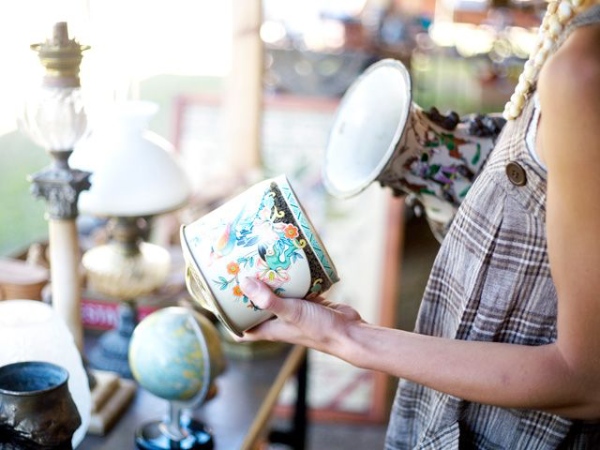
05. If the porcelain requires thorough cleaning, do it on a tabletop covered with soft towels. Keep the distance between the table surface and the porcelain item minimum.
06. Do not mix them with other kitchenware or vases while cleaning. The precaution will help you to avoid clutter and inadvertently causing damage.
07. While storing the antique plates in stack, place a soft cloth between each plate to give a cushioning effect and prevent clanking of plates, which otherwise can damage them permanently.
08. Handle the porcelain antiques firmly with both the hands and always hold from the bottom.
09. If any part breaks down, don’t glue it back with commercially available adhesives. Doing blotchy and unprofessional work on antiques diminishes its value greatly. Get an expert help.
Toy Antiques

The toy genre consists of dolls, animals, train sets, scale models and buildings, rocking horses, pedal cars, money banks, soldier figurines toy, etc. These are mostly a valuable collector’s item and can be used to decorate your home or you may buy them purely for investment purposes.
Dolls are valued for their country of origin, clothes, the material of fabrication, design, the era they represent, etc. They can be made of wood, wax, bisque, etc. Teddy bears look awesome on display as well as they are worth every penny as an investment in antiquity. For example, “Automata” antiques are beautiful toys that are mechanical, detailed, and are made with subtle accuracy: their intricacy have made them excellent showpieces.
Care of Toy Antiques
01. Cleaning of toys is material specific. Just be careful not to destroy any old markings.
02. Maintain a note of the parts of the toys. A photograph would serve you better. Complex toys with multiple removable parts will lose their value if any of their parts is lost.
03. Do not handle these toys with dirty and greasy hands. It is difficult to wash off the grime from old cloth dolls and teddy bears.
04. Keep the storage area free of moths and bugs.
05. Be careful not to lose small accessories that are either sewn onto the doll, like buttons, etc.
06. Save the packaging and the manufacturer’s tag so that you can resell them and also for insurance purpose.
General Precautions When You Collect Antiques
01. Insure your collection. Analyze the extent how much does your house insurance policy covers. If your antiques are more valuable than you may require separate insurance. Document all the receipts and records pertaining to the ownership of the antique- both past and present.
02. Look for chipping, craze lines, cracks, and missing pieces in an antique. Use a magnifying glass if required.
03. Do your homework well. A good amount of research on the objects is a must. Otherwise, the chances are high that you will get duped with as-good-as-the-original and fake, replicas.
04. Exercise caution before buying. If the glass antiques appear cloudy, it can be due to excessive or sloppy cleaning. This effect is permanent and depreciates the value.
05. A patina on wood or metal antiques is desirable.
06. A painting that has the artist’s name or signature is more valuable than unnamed art pieces.
07. Buy only from the popular antique fairs, dealers or shops. Authentic antiques are expensive. Don’t fall prey to cheaper replicas.
Conclusion
Antique articles for home interiors are a window to the past. They’ve historical, financial and sentimental value. As much as they add elegance to your home, they’re difficult to maintain in pristine conditions. When you own it, preserving that part of history becomes your responsibility – you need to care and preserve them with best care and attention.

Many antique pieces are found in the most unusual places. You may just stumble on them at thrift stores or yard sales, haat bazars, or put up by owners who have no idea about its value or these can be the distress sale. Sound and good knowledge about antiques will help you to acquire piece that would be appreciated for the history it carries and become profitable in due course of time. Meanwhile, if maintained well, they will add elegance to your home as decorative pieces.
If you buy expensive antique articles for home interiors, be absolutely sure about its authenticity. Read and do your research before choosing an antique piece. Hire professional help to maintain it. This would also help you to pass it onto future generation and adding value, with time and, without damaging the material. An antique, once owned, is a treasure forever. Remember, the return value of these items is more than return value on any other investment like stock, gold, or even real estate.
Also Read:
10 Ways of Bringing Natural Décor to Your Room!
7 Quick Tips for Remodeling Your Living Room!
10 Rustic Interior Design Style Ideas for Your Home!
Image Courtesy: Image 3, Image 4, Image 18
Author Bio
Preema Pinto


































